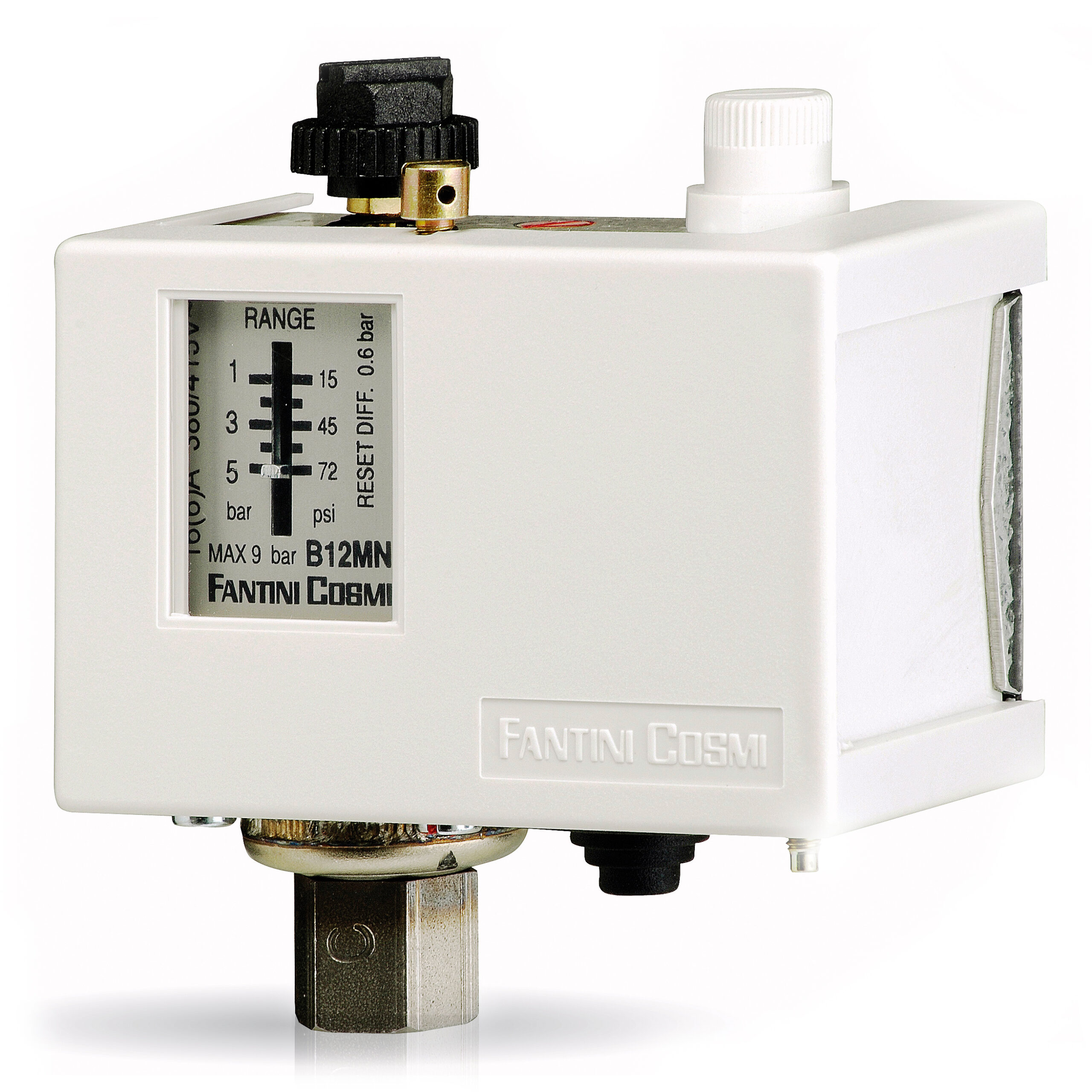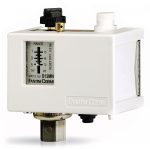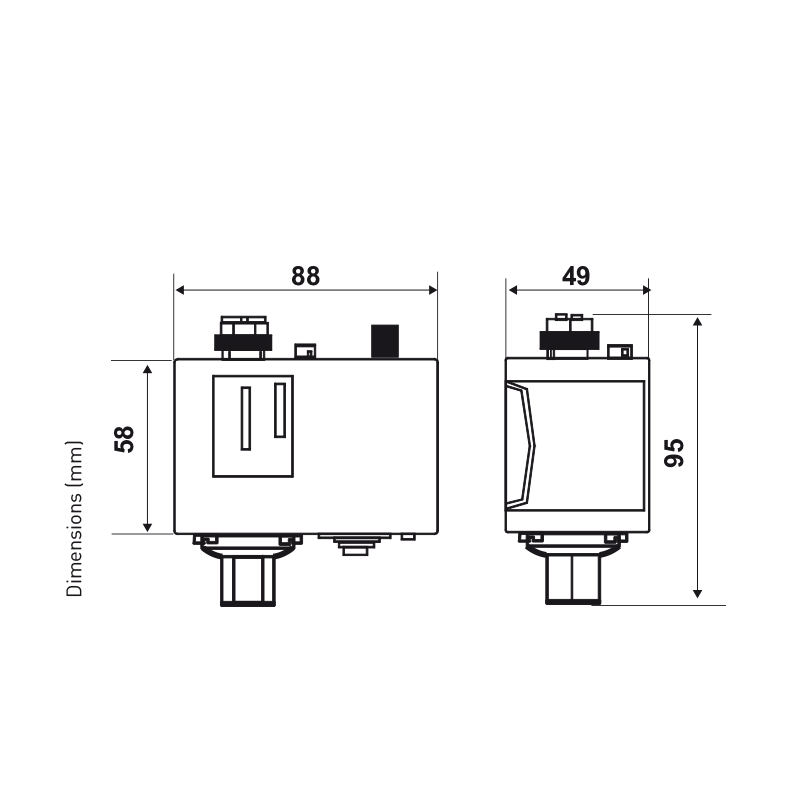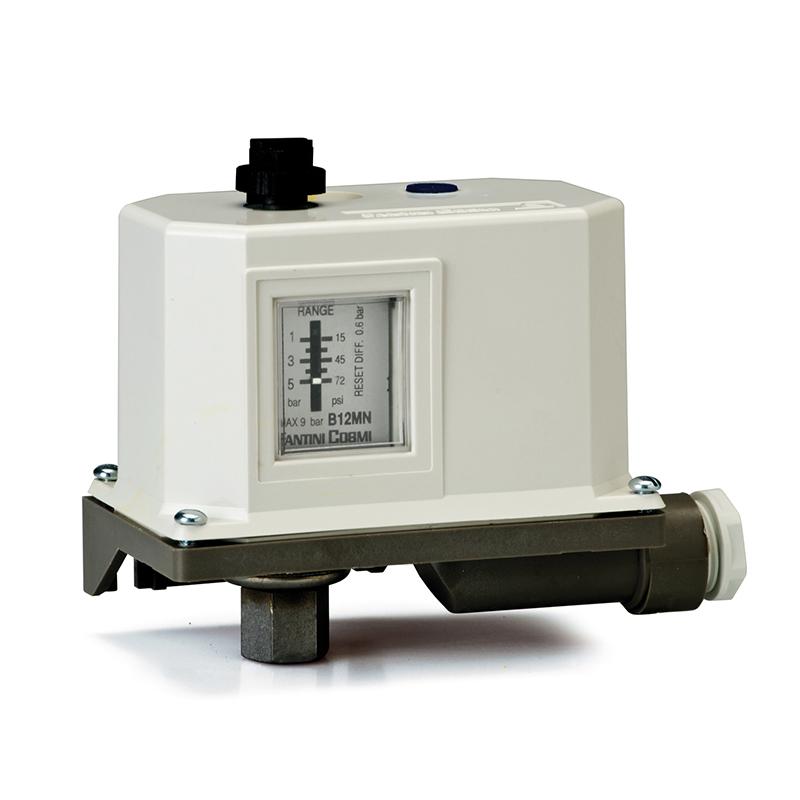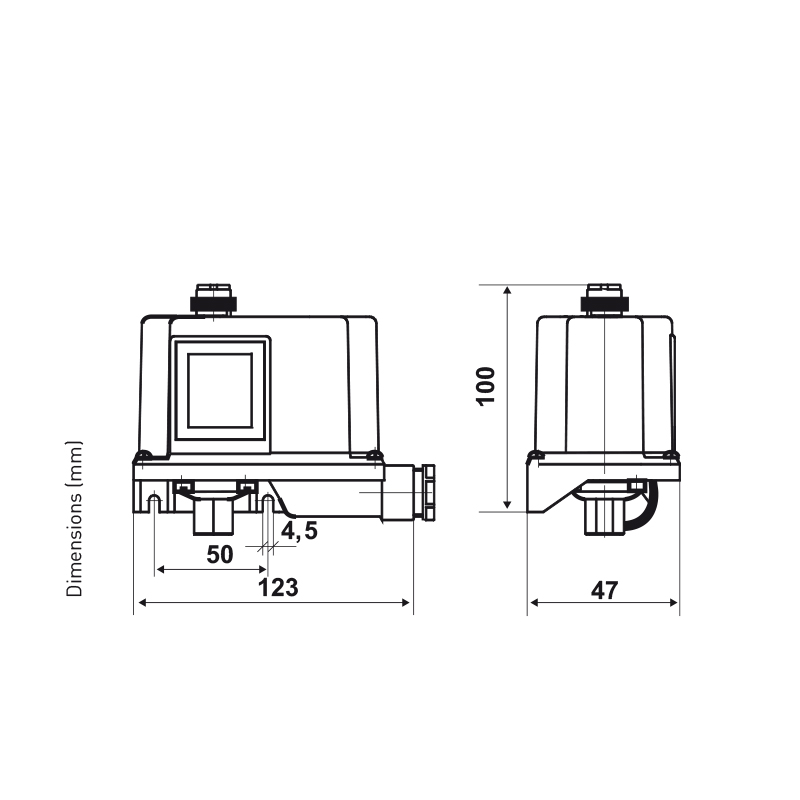Blocking pressure switches with manual reset
-
DESCRIPTION
General features0
Blocking and safety pressure controls with manual reset, suitable for steam generators and fluids and inert gases in general.
- Calibration screw made to be welded after testing.
- Connection G 1/4.
- Sensitive element with stainless steel membrane, laser welded.
- Metallic frame.
- Cover in shockproof thermoplastic material.
- Output connections with PVC cable gland.
- Maximum temperature of the controlled fluid: 120°C.
- Pressure switch body admissible temperature: -35÷60°C.
- Storage and transport temperature: -35÷60°C.
- Unit weight: 0,46 Kg.
ACCESSORIES
- G1/2 cable gland in V0 self-extinguishing, shockproof thermoplastic material, code: 303298LA
- IP44 protection casing IP44, code: 2593367
Electric features- Rated insulation voltage Ui 415V~
- Continuous duty rated current Ith 16A
-
ADVANTAGES
0
Blocking and safety pressure controls with manual reset, suitable for steam generators and fluids and inert gases in general.
Advantages -
TECHNICAL SPECIFICATION
CODE RESET RANGE DIFFERENTIAL SENSITIVE ELEMENT MAX. PRESSURE CONNECTION G 1/4 PROTECTION DEGREE B12MN manual 1 ÷ 5 bar 0.6 bar fixed 9 bar female IP40 B12MNY manual 1 ÷ 5 bar 0.6 bar fixed 9 bar female IP65 1 Bar = 100Kpa the differential must be deducted from the range value -
HOMOLOGATION AND INSTALLATION
Homologation
- Complies with CE 0497 Directives.
- Complies with EN 60947-1 and EN 60947-5-1 standards.
- Corresponding to the requirements provided in the R.3.B. chapter of the applied technical specifications of D.M. dated December 1st 1975 R.3.B.
Installation and use- Direct installation on the pipe.
- Pressure element connection G 1/4.
- In case of fluid temperatures higher than the maximum allowed, connect the pressure switch to the pipe by inserting a metallic spiral between the pressure switch and the pipe to facilitate heat dispersion.
- Possibility of mounting on metallic clamp, exept for the waterproof casing versions.
- When pressure increases: 1-2 opens.
- For use in connection with a regulation pressostat.
- TECHNICAL LITERATURE
-
FAQS


